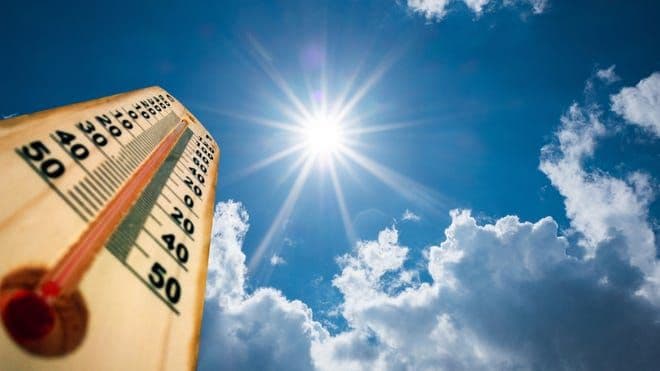Autumn's Riddle: When Folklore Fades and Data Speaks on the Coming Chill
Unpack fall 2025's weather mystery. We contrast classic almanac lore with NOAA's data, revealing how forecasts shape our expectations and preparations for a changing climate.
The Annual Weather Oracle Debate
As summer’s final, sweltering days begin their slow retreat, a familiar question emerges from the heat haze: What will autumn bring? For many, the answer lies in a curious annual ritual – consulting the venerable and its cousin, the .
These traditional publications, steeped in centuries of folklore and proprietary meteorological methods, offer tantalizing glimpses into the coming months. This year, their predictions for fall 2025 paint a nuanced, almost poetic, picture. The Midwest, for instance, is forecast for clear September skies, albeit with a 'tug-of-war between fair weather and storm systems.' Central states like the and the are warned of looming severe thunderstorms and even tornado potential. Later in the season, October and November are slated to deliver traditionally cool weather across vast regions, with the even seeing a chance of early snow. The specifically anticipates a 'cool and dry' fall for and the wider region, with temperatures potentially two degrees below normal in September and October. Meanwhile, the dubs its outlook a 'flirty, flurry, fall,' promising 'a season of contrasts' from 'early chills in the North to lingering warmth in the South.' Yet, amidst these evocative forecasts, a crucial question hangs in the air: how much faith should we truly place in these age-old weather oracles?
Ancient Wisdom, Modern Skepticism: Decoding the Almanacs
The enduring popularity of the and stems from a deep-seated human desire to anticipate the future, especially when it comes to something as impactful as weather. These publications have long been a comforting staple, their predictions often read more for their nostalgic appeal than their scientific rigor. They speak to a time when agricultural rhythms dictated life, and long-range forecasts, however rudimentary, were essential for survival. This year, the almanacs continue their tradition of painting broad strokes of the upcoming season. The , for instance, specifically calls for a 'cool and dry' fall for and the wider /, predicting temperatures two degrees cooler than normal for September and October. The , with its 'flirty, flurry, fall' outlook, suggests a season of dramatic shifts, from early northern chills to southern warmth and alternating stormy and tranquil periods. However, the perceived 'wisdom' of these ancient texts often collides with modern empirical analysis. Despite their confident assertions of 80-85% accuracy, scientific studies have repeatedly cast doubt on these claims. Research, including one study cited by Popular Mechanics, suggests that the 's long-range predictions are, at best, only slightly better than a coin flip, often hitting the mark around 52% of the time. This stark contrast between claimed precision and documented performance underscores the ongoing tension between tradition and evidence-based science.

Beyond Folklore: How Science Maps Tomorrow's Temperatures
While traditional almanacs offer a charming, if often unreliable, glimpse into the future, modern meteorology operates on an entirely different plane, leveraging vast datasets, complex atmospheric models, and cutting-edge technology. Organizations like the () and its provide forecasts rooted in scientific observation and statistical probability, rather than historical patterns or celestial alignments. Their approach to long-range predictions involves analyzing global atmospheric and oceanic conditions, including phenomena like or , to project broad trends. For fall 2025, has offered a distinctly different outlook from the almanacs. Their seasonal temperature outlook map, released in mid-July, indicates a leaning towards a warmer-than-normal fall for much of the . Specifically for , which the predicted would be 'cool and dry,' forecasts a 33-50% chance of seeing warmer-than-normal temperatures from September through November. This scientific perspective suggests that many regions might have to wait longer for that crisp, cool autumn air. The contrast couldn't be starker: while the almanacs promise traditional chills and early snow, data-driven models point towards a lingering warmth, challenging our ingrained expectations and highlighting the evolving nature of our climate.
The Season of Shifting Expectations: Our Minds in the Meteorological Mix
There’s a profound psychological element to weather forecasting, particularly when it comes to the transition from summer’s oppressive heat to autumn's anticipated cool. After enduring scorching days, the collective yearning for 'sweater weather' becomes palpable. Just ask anyone in , dreaming of a 'cold front' rather than more air conditioner-generated chill. This deep-seated desire for cooler temperatures often makes us receptive to forecasts that align with our hopes, even if they're less scientifically robust. The almanacs, with their predictions of 'traditionally cool weather' and early snow in certain regions, tap directly into this longing, offering a comforting narrative of a classic fall. They promise clear skies and a welcome change, even if it's accompanied by a 'tug-of-war' of systems. However, modern scientific forecasts, like those from , often deliver a dose of reality. When predicts a 33-50% chance of warmer-than-normal temperatures for through November, it can be a psychological letdown, especially for those ready to embrace pumpkin spice lattes and fall foliage. This divergence between hopeful folklore and data-driven probability reflects our collective struggle to reconcile traditional seasonal expectations with the undeniable shifts occurring in our climate. It underscores how much our anticipation of weather is intertwined with our emotional landscape, shaping how we perceive and react to the forecasts we receive.
Embracing the Unpredictable: Preparing for Fall's True Nature
So, as autumn officially arrives on September 22nd, what's a weather-watcher to do amidst these conflicting predictions? The promises a 'cool and dry' fall for the , while the foresees a 'flirty, flurry, fall' with contrasts from 'early chills in the North to lingering warmth in the South.' Yet, leans towards a warmer-than-normal season for much of the , including , indicating a delayed arrival for consistent cooler temperatures. The truth, perhaps, lies in embracing the inherent unpredictability of our weather, especially in a changing climate. Rather than clinging to a single forecast, the most practical approach is to prepare for a range of possibilities. This means not just having your favorite sweater ready for those fleeting cool snaps, but also acknowledging that prolonged warmth might necessitate lighter layers well into October or November. Seasonal planning, from wardrobe choices to outdoor activities, benefits from adaptability. The 'tug-of-war' between fair weather and storm systems, or early chills versus lingering warmth, as even the almanacs suggest, might be the most accurate prediction of all. Ultimately, understanding our relationship with weather anticipation means moving beyond simple comparisons of right or wrong. It's about recognizing our desire for certainty, appreciating the evolving science, and equipping ourselves to navigate whatever nature truly brings.
Related Articles

The Sky's Whisper: Navigating Life's Atmospheric Rhythms

The Sky's Whisper: Navigating Life's Atmospheric Rhythms

Nature's Rollercoaster: Understanding Your Local Weather's Wild Swings

Nature's Rollercoaster: Understanding Your Local Weather's Wild Swings

The Daily Dial: Decoding the Earth's Shifting Moods in Your Local Forecast

The Daily Dial: Decoding the Earth's Shifting Moods in Your Local Forecast

The Thermometer's Tantrum: Unpacking Earth's Unpredictable Temperature Swings
